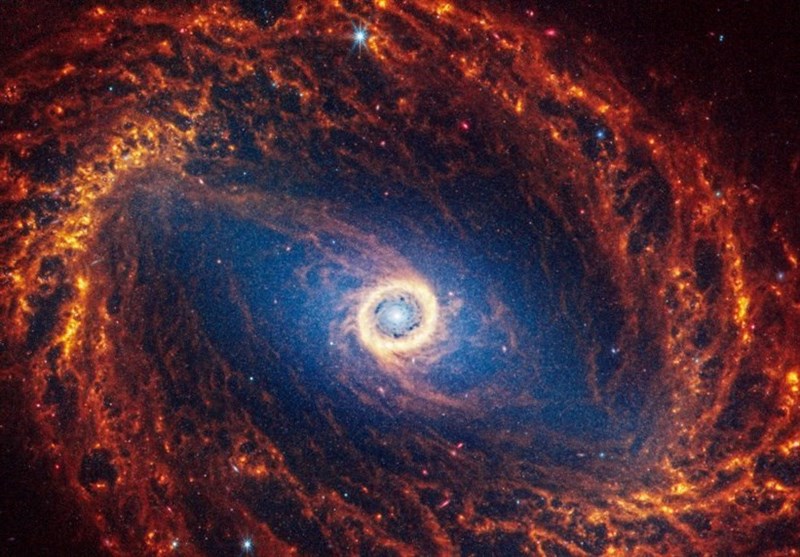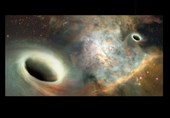Recent Astrophysical Simulations Suggest Novel Source of Gravitational Waves
TEHRAN (Tasnim) – Recent astrophysical simulations have pointed to a previously unknown source of gravitational waves originating from the collapse of massive stars.
Gravitational waves, which are ripples in the fabric of spacetime, are generally triggered by cataclysmic events such as black hole mergers and neutron star collisions.
However, this new research opens the possibility that during the violent death of massive stars, when they undergo core collapse, another, subtler type of gravitational wave may be emitted.
The researchers behind the study suggest that the source of these gravitational waves is related to the collapse of massive stars, particularly those with a mass 15 to 20 times greater than the Sun. As these stars reach the end of their life cycle, they collapse into black holes in a process known as a collapsar. During this violent event, some of the star's mass is expelled instead of falling directly into the black hole. This material forms a massive accretion disk around the black hole, which emits gravitational waves as it spirals inward.
This discovery is significant because, until now, scientists believed that gravitational waves from such a process would be too chaotic to detect. The interaction of the black hole with its surroundings was thought to generate too much noise, making it difficult for sensitive instruments to pick up the signals. However, the new study has shown that the interaction between a black hole and its accretion disk produces more coherent and less chaotic waves than previously expected.
Ore Gottlieb, a research fellow at the Flatiron Institute's Center for Computational Astrophysics and lead author of the study, stated, "We found that the gravitational waves from these disks are emitted coherently, and they're also rather strong." This new insight challenges earlier assumptions and suggests that these waves could be detected using current observatories like LIGO.
The potential discovery of these waves opens up new avenues for understanding the inner workings of black holes and collapsing stars. Until now, gravitational waves have only been detected from the merger of compact objects, such as neutron stars or black holes. This study marks a significant step forward in the search for other non-merger sources of gravitational waves, offering the possibility of studying the complex dynamics of collapsing stars.
Gravitational wave detectors such as LIGO and upcoming projects like the Einstein Telescope could play a critical role in this discovery. The simulations conducted by Gottlieb and his team suggest that while the signals may be weaker than those from black hole mergers, they could still be strong enough to detect from distances of up to 50 million light-years. This range is about one-tenth of the detectable range of more powerful gravitational waves from mergers, but it still provides a promising opportunity to study collapsars and their aftermath.
Gottlieb emphasized the importance of these findings, saying, "The only way for us to study these inner stellar regions around the black hole is through gravitational waves. These are things that we can otherwise not detect." By examining the waves emitted by collapsars, scientists could gain valuable insights into the properties of black holes, the behavior of collapsing stars, and the structure of the star’s inner regions during its final moments.
Although the study offers a new perspective on gravitational waves, the detection of such signals remains a challenging task. Due to the wide range of masses and rotation profiles of stars, the gravitational wave signals generated by collapsars can vary significantly. To create a comprehensive model, scientists would need to simulate millions of collapsar events, which is currently too costly and computationally intensive.
One alternative strategy suggested by the researchers involves searching for gravitational wave signatures in historical data. By looking for gravitational waves that correspond to known supernovae or gamma-ray bursts, scientists may be able to identify collapsar events that have already occurred. Yuri Levin, a professor at Columbia University and co-author of the study, explained that even with the challenges, the field is rapidly advancing. "The gravitational wave community is already interested in looking for these events, but it's not an easy task," Levin said.
Moving forward, the research team hopes to refine their simulations and develop more accurate models for predicting the gravitational wave signatures of collapsars. With continued advances in technology and observation, scientists are optimistic that they will be able to detect these new sources of gravitational waves, unlocking new secrets about the cosmos.






